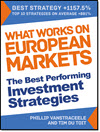This is the editorial of our monthly Quant Value Investment Newsletter published on 07-10-2025. Sign up here to get it in your inbox the first Tuesday of every month.
More information about the newsletter can be found here: This is how we select ideas for the Quant Value investment newsletter
Are you wondering if you should put more money into your “best” stock ideas? This article shows why that could quietly ruin your returns. You will learn why sticking to a 2% position size per stock protects you from hidden risks like volatility drag, overconfidence, and portfolio blowups.
Backed by 10 years of data, you will see why concentrated portfolios often underperform - even when filled with quality stocks. This one principle can help you build a steadier, more reliable portfolio that grows over time with less stress.
Estimated Reading Time: 4 minutes
Why You Should Stick to 2% Per Stock
This month I want to get back to the topic of position sizing after reading an insightful article: “Total Concentration” by Brian Chingono of Verdad Research.
You may remember that I wrote to you about possibly increasing position size while you build out your portfolio. That idea came from the experience of one reader, which I shared in the August newsletter. If you missed it, you can read it in the newsletter archive.
This article reinforced why it is still the best idea for you to only invest 2% of your portfolio in each stock we suggest.
Why Not Go Bigger on Your Best Ideas?
At first, putting more money into your best ideas seems like common sense. If a company checks all the boxes - cheap, high quality, strong momentum - it feels right to go bigger. Some well-known investors even say it is the best way to outperform.
But the numbers tell a different story.
In Verdad’s 10-year simulation, portfolios holding only 5 to 10 stocks had a 40% chance of earning less than 5% per year. These results were worse than portfolios with 50 or more stocks, which had closer to a 20% (50% lower) chance of falling below that same 5% annual return.
Even worse, the concentrated portfolios underperformed the market itself. Despite using quality filters ranking stocks by profitability and free cash flow.
These smaller portfolios earned lower returns than the S&P 500, once volatility drag and fees were factored in.
Why?
Because when you hold just a few stocks, anything can go wrong:
- One company misses earnings and drops 25%.
- A political issue hits a key country where the company operates.
- A product recall, lawsuit, or unexpected resignation crushes the stock.
In a 50-stock portfolio, that one bad hit might only cost you 0.5% to 1%. But in a 5-stock portfolio, it could cost you 10% or more.
And that drag compounds.
Even when concentrated portfolios were filled with high-ranked “quality” stocks, they still underperformed the same quality strategy spread across 50 stocks. In other words, the concentrated approach cancelled out the benefits of good stock selection.
So, while it may feel smarter to “back your best ideas,” the research says otherwise. Smaller portfolios carry more risk, more volatility, and give you lower returns over time.
The Real Risk: Volatility Drag
Let us look at one of the key reasons why concentrated portfolios underperform: volatility drag.
Volatility drag works like this: If a stock drops 30% and then gains 30%, you are still down 9%, and if it drops 50% and then gains 50% you are down 25%. The bigger the movements, the more damage is done, even if a stock recovers the same as the drop.
This is why portfolios with only a few stocks often trail larger, more balanced ones.
More stocks = fewer big swings = more stable returns.
Diversification Still Wins
Verdad ran thousands of simulations. What they found was clear:
- Portfolios with 50 or more stocks had much lower risk.
- Their long-term results were more reliable.
Even when choosing stocks using quality filters, the benefits only showed up once portfolios had enough names.
Holding just 5 to 10 “great stocks” did not improve returns - it hurt them.
Why You Should Stick to 2%
Here is why we still recommend a 2% position size for each stock:
- It stops one bad result from damaging your whole portfolio.
- It lets every stock play a fair role in your total return.
- It lets the investment strategy do the heavy lifting, not one lucky pick.
We want your portfolio to grow because of the newsletter’s investment strategy, not from just one or two stocks. That is how our system was built. It is how we protect you from volatility and emotional decisions.
Even though we research every stock deeply, we cannot predict the future. No one can. That is why discipline matters more than conviction.
Your, helping you get the most from the system analyst.
Get more information here: Your Treasure Map to Europe, Asia, and North America's Hidden Gems!
FREQUENTLY ASKED QUESTIONS
1. Why only 2% per stock? That feels too small.
It protects you. If one stock crashes 30%, your whole portfolio barely feels it. With a 2% position, a 30% drop only costs you 0.6%. This lets you stay calm, stay invested, and let your system work without one bad stock ruining everything.
2. What if I really believe in one stock? Should I go bigger?
No. Even your best ideas can surprise you. The market does not reward overconfidence. The research shows that smaller, more diversified portfolios actually lose more money - even when filled with “great” stocks. Discipline wins over conviction.
3. Why do concentrated portfolios underperform?
Because of “volatility drag.” Big losses hurt more than big gains help. A stock that drops 50% then rebounds 50% still leaves you down 25%. If that stock was 20% of your portfolio, that drag is painful and lasting.
4. Isn’t diversification just playing it safe?
It is actually the smarter bet. Portfolios with 50+ stocks not only have less risk - they make more money long-term. They turn down the noise, smooth out bumps, and let the system carry you forward.
5. What if I want to build my portfolio faster? Should I use bigger position sizes at the start?
It is tempting, but risky. One big loss early can set you back years. Better to spread your bets and focus on consistency. Remember: it is your system that creates wealth, not a single stock.
6. Can’t I just trust my gut on the good ones?
That is how most investors underperform. Even top fund managers get more wrong than right. You do not need to guess. You need to follow a tested system and give it time to work. Gut feelings fade. Data lasts.
7. What if I feel like I am missing out on big wins?
A 2% stake in a stock that doubles still lifts your portfolio. And if the whole system works, you will have 5, 10, or 20 winners—not just one. That is the power of letting every stock have a fair shot, not betting everything on a lucky pick.
Get more information here: Your Treasure Map to Europe, Asia, and North America's Hidden Gems!


